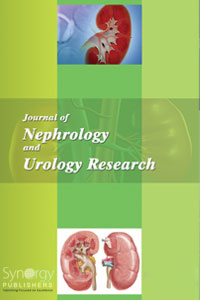
Micturition and Urinary Incontinence Pages 19-26
Abdel Karim M. El Hemaly, Laila A.S. Mousa and Ibrahim M. Kandil
Obstetrics and Gynecology, Faculty of Medicine, Al Azhar University, Cairo, Egypt
DOI: http://dx.doi.org/10.12970/2310-984X.2014.02.01.4
Abstract: Urinary continence depends on a closed and empty urethra. Two factors keep the urethra closed and empty: one inherent and the second factor is an acquired factor.
1. The inherent: is the presence of an intact healthy internal urethral sphincter (IUS) with strong walls. The IUS is a collagen-muscle tissue cylinder that extends from the bladder neck down to the perineal membrane in both sexes. The collagen forms the strong chassis of the IUS. The muscle fibers are plain muscle fibers that lie on top and intermingle with the collagen fibers in the middle of the cylinder’s thickness. In women, the IUS lies intimately on the anterior vaginal wall.
2. The acquired factor is keeping high alpha-sympathetic tone at the IUS maintaining its closure all the time until there is a desire or a need to void and social circumstances allow. The mother starts to teach and train her child, at about the age of 18-36 months, how to hold up and not to void until suitable circumstances are available. This is achieved by building up high alpha sympathetic tone at the IUS keeping it contracted and the urethra closed and empty all the time until proper social circumstances are available.
The urinary bladder (UB) stores the urine, which we void through the urethra. Voiding has two stages: First stage, before training, in infancy and early childhood: As soon as the urinary bladder is full, sensation of bladder fullness travels along the pelvic sacral nerves (S 2, 3 & 4) to the spinal cord. Through spinal cord’s centers, reflex parasympathetic activity leads to contraction of the detrusor muscle voiding the urine through an open urethra irrespective of neither time nor place. The second stage is after training: The mother starts to teach and train her infant-child how to hold up until proper social circumstances are available. The teaching and training leads to learn how to maintain high alpha-sympathetic tone (T 10-L 2) at the IUS keeping it contracted and the urethra closed and empty all the time until favorable social circumstances allow.
Both factors (the inherent and the acquired) create high urethral pressure, which is much higher than the pressure in the urinary bladder. Thus, the urethra is closed and empty all the time.
Childbirth causes over stretching of the vagina damaging the vaginal chassis, and this will cause injury to the intimately related IUS damaging its collagen chassis. Torn weak IUS cannot stand against sudden rise of abdominal pressure and urine will leak (stress urinary incontinence SUI). The urine leak will embarrass the woman, immediate sympathetic reaction will increase the already present high alpha sympathetic tone at the IUS to confirm its closure and prevent further leak of urine. Imaging with 3-dimension ultra-sound (3DUS) and MRI demonstrate the rupture of the IUS.
Keywords: Micturition, Urinary Incontinence (UI), Stress Urinary Incontinence (SUI), MRI, 3DUS. Read more

